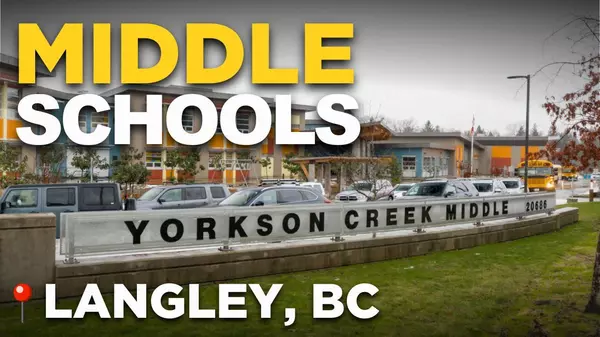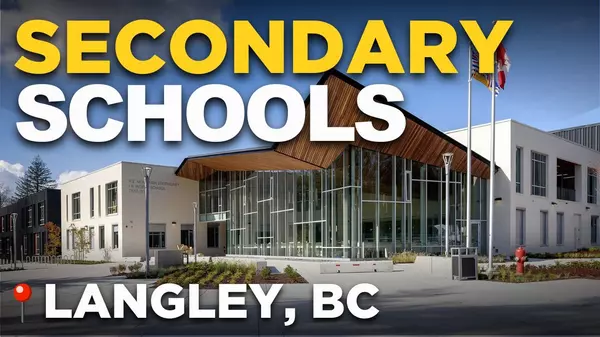How to Find the Best Schools in BC [Fraser Institute School Rankings]
Understanding the Fraser Institute's School Ranking System in Canada
Moving to a new area comes with many decisions, especially when it comes to choosing the right school for your child. One of the most common questions I get from newcomers is, "What are the best schools in the area?" A popular reference for many is the Fraser Institute school ranking system, but is it really the best way to judge school quality?
In this post, I’ll break down the methodology behind the Fraser Institute rankings, discuss their limitations, and share insights from experienced teachers in the Surrey and Langley school districts.
What is the Fraser Institute School Ranking System?
The Fraser Institute is a Canadian think tank that publishes annual school rankings based on standardized test scores. These rankings are widely cited by media, policymakers, and parents. The rankings use a School Performance Index, which evaluates schools based on how students perform in standardized tests.
While this data can offer valuable information, it doesn't consider important factors such as:
- Effectiveness of teaching methods
- Strength of curriculum
- Availability of student support and resources
The Limitations and Criticisms of the Ranking System
1. Reliance on Standardized Test Scores
Standardized test scores are influenced by numerous factors, including:
- Socioeconomic status of students
- Prior knowledge and preparation
- Resources available to the school
Schools located in more affluent areas often have students with access to better resources, which can lead to higher test scores—even if the teaching quality is similar to schools in less affluent communities. This creates a biased ranking system that favors schools with higher-income demographics.
2. Weighting of Subjects
The Fraser Institute's rankings place greater emphasis on subjects like Math and Science. While these subjects are important, this method disadvantages schools that excel in other areas such as Arts or Social Studies, creating an imbalance.
3. Limited Scope
The ranking system:
- Focuses on a limited number of schools within each province.
- Excludes private schools and some rural schools.
This makes it challenging to get a comprehensive understanding of all schools in an area.
4. Overlooking Other Measures of School Quality
Relying solely on test scores ignores other significant indicators of school quality, such as:
- Graduation rates
- University and college preparation
- Extracurricular activities
- Student and parent satisfaction
Insights from Local Teachers
I reached out to teachers in the Surrey and Langley School Districts for their insights. Here's what I learned:
- Many teachers noted that biases in standardized testing disproportionately affect schools with students from low-income families, English language learners, refugees, and immigrants.
- Some schools design their curriculum specifically to "teach to the test," focusing on improving standardized scores rather than providing a well-rounded education.
- Teachers emphasized that schools in less affluent communities may rank lower, but this does not reflect the dedication of teachers or the strength of community support.
A Teacher's Perspective
One teacher shared an impactful anecdote:
"There is no system that accurately or fairly ranks public schools. The Fraser Institute's testing disproportionately affects schools with high populations of English language learners and low-income families. My school ranks poorly on paper, but it has an incredible community, dedicated staff, and students who improve immensely every year. Rankings don’t capture this."
Her advice? Choose the school that is closest to your home. This encourages walkability and greater involvement in the school community.
How Should You Evaluate a School?
While the Fraser Institute rankings can provide some insights, they should be only one piece of the puzzle. Here are other important factors to consider:
- Visit the school and speak to teachers and staff.
- Check parent and student reviews online.
- Research extracurricular offerings and community involvement.
- Evaluate graduation rates and post-secondary preparation programs.
- Ask about resources and support systems available for diverse learning needs.
Final Thoughts
The Fraser Institute's school rankings can offer a starting point for evaluating schools, but they don't tell the full story. They heavily focus on test scores and overlook critical factors like community, extracurriculars, and student support.
If you’re considering moving to the Lower Mainland and want to explore which neighbourhoods would suit you best, I’d be happy to help!
📞 Book a Call with Me: Schedule a Consultation
📢 Subscribe to my YouTube Channel: Living in the Lower Mainland
🏡 Looking for Homes: Homes for Sale
Categories
Recent Posts










GET MORE INFORMATION

